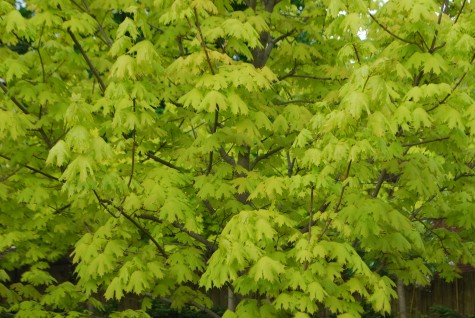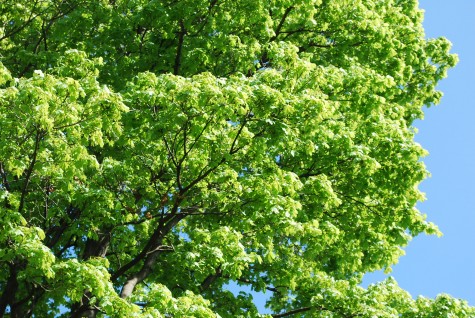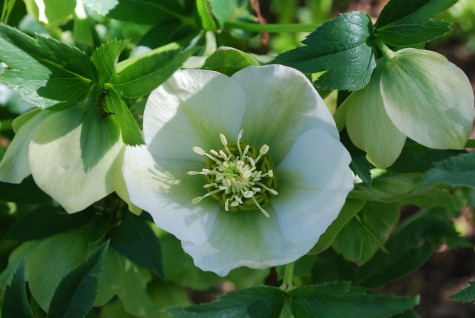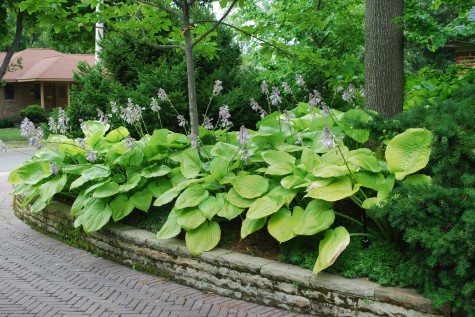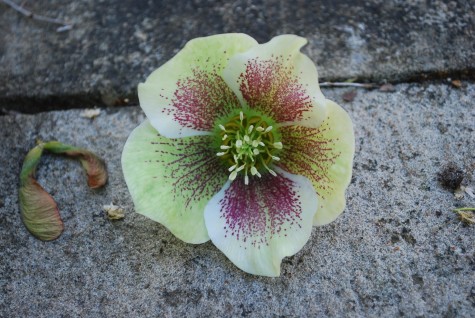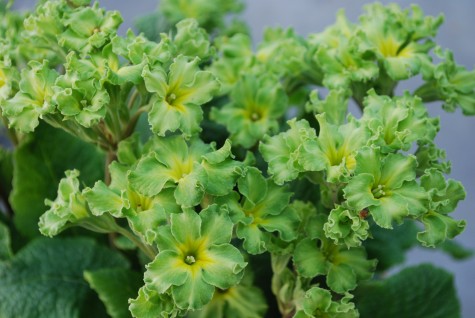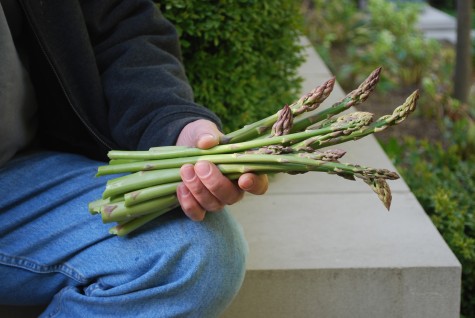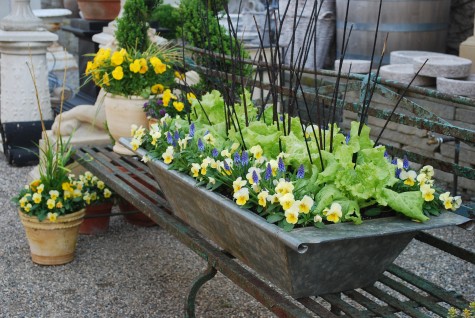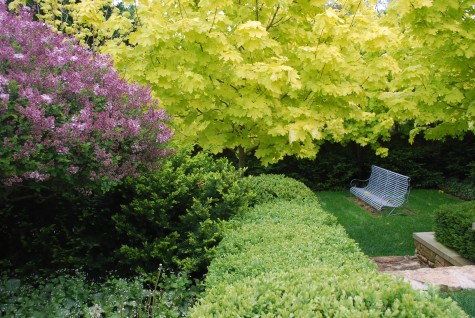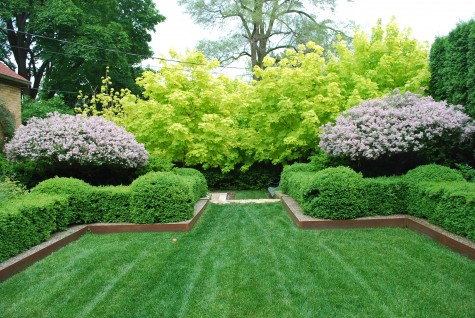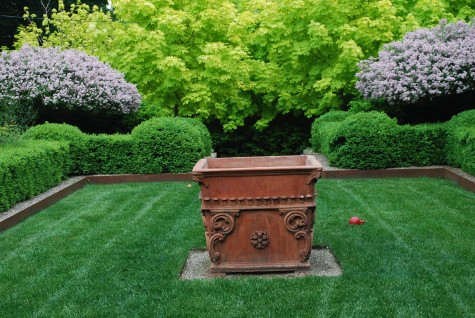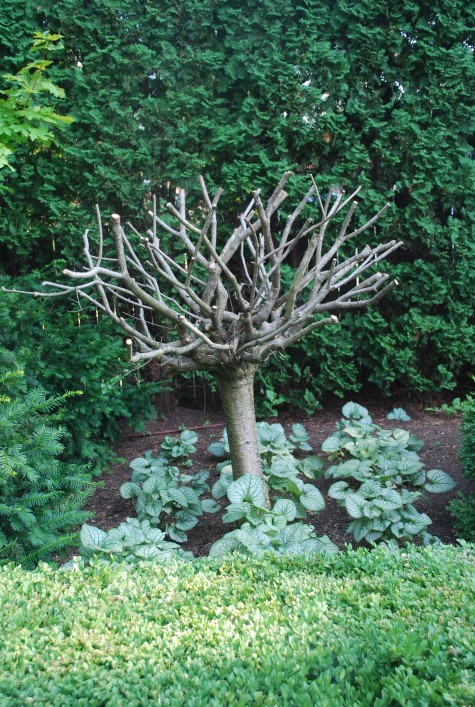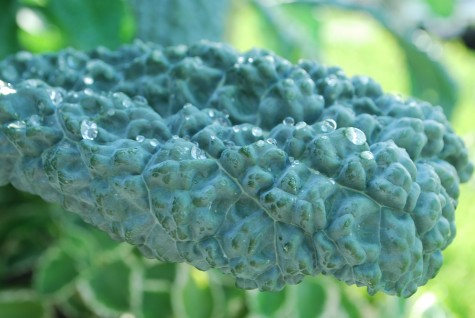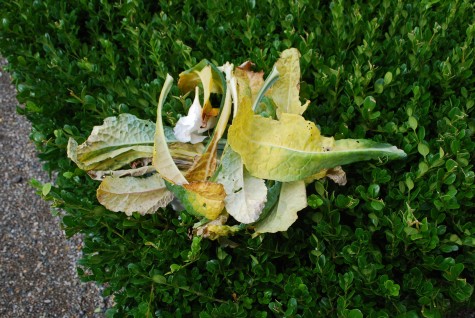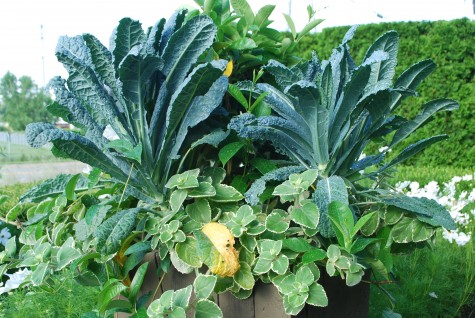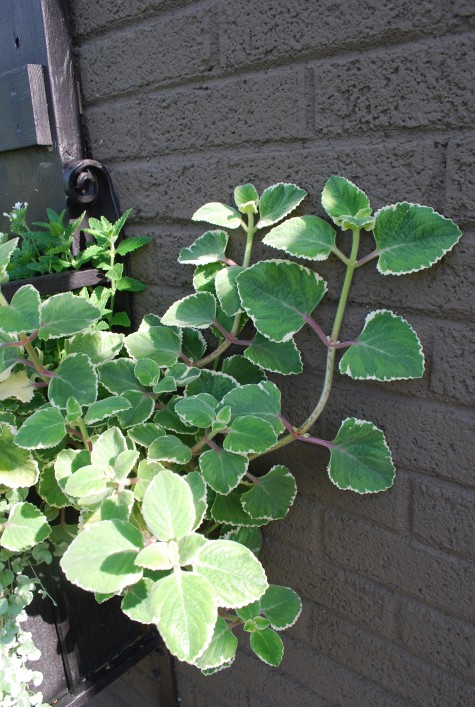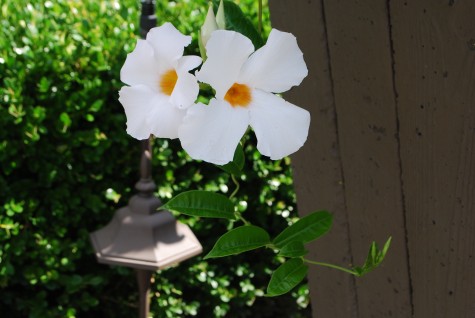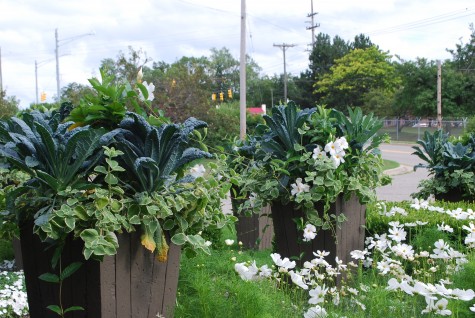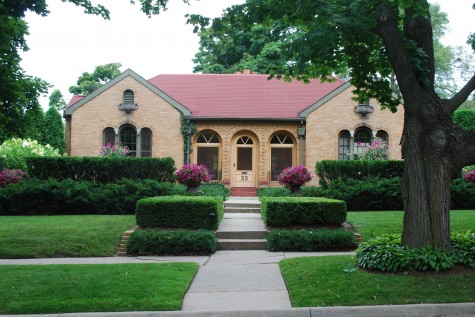 My small arts and crafts/mediterranean house features an enclosed front porch. The front door is flanked by large pair of matching arched windows. It took an embarassing number of years to figure out that though I wanted to screen the portion of the garden close to the house, I needed to landscape such that the door would be visible from the street. I like how the landscape and and pots work together to say welcome, at the same time as they provide me privacy. I am finally happy with how this looks.
My small arts and crafts/mediterranean house features an enclosed front porch. The front door is flanked by large pair of matching arched windows. It took an embarassing number of years to figure out that though I wanted to screen the portion of the garden close to the house, I needed to landscape such that the door would be visible from the street. I like how the landscape and and pots work together to say welcome, at the same time as they provide me privacy. I am finally happy with how this looks.
 This front door seemed to ask for a little celebration; we added a roof over the porch, widened the walk considerably, and placed two large bronze urns on either side of the porch. Wide walks permit placement of containers so they frame a view, rather than obstruct it. As you can see, the walk from the driveway to the door is short-the big idea here? Make much in a small space.
This front door seemed to ask for a little celebration; we added a roof over the porch, widened the walk considerably, and placed two large bronze urns on either side of the porch. Wide walks permit placement of containers so they frame a view, rather than obstruct it. As you can see, the walk from the driveway to the door is short-the big idea here? Make much in a small space.
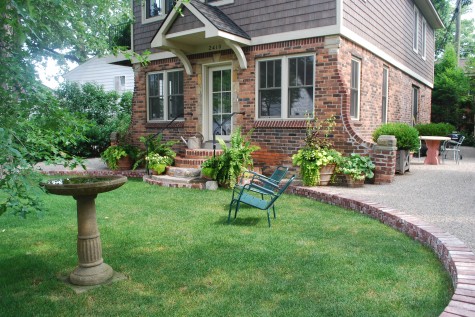 Rob’s house is very tall out of the ground; he literally has a staircase going to the front door. A poorly designed landscape would only intensify that gawky architecture. The placement of multiple pots helps to set the house down visually, and features the unusual wing walls. There is all of the intent of a garden here, in a form of his own making. All of his plant choices are green and textural-any flowers are green. Distinctive-his choices.
Rob’s house is very tall out of the ground; he literally has a staircase going to the front door. A poorly designed landscape would only intensify that gawky architecture. The placement of multiple pots helps to set the house down visually, and features the unusual wing walls. There is all of the intent of a garden here, in a form of his own making. All of his plant choices are green and textural-any flowers are green. Distinctive-his choices.
 Front doors that are part of a large covered porch can be challenging. This front door is part of a greater room. Pots at the door-I think my client thought it would dilute the simple presentation of the house. The pots on top of these newel posts function as living finials, and make an uncluttered, but welcoming gesture. The effect of this entrance planting is restrained-gently austere. This vintage house gets a decidedly modern feeling from a careful editing job.
Front doors that are part of a large covered porch can be challenging. This front door is part of a greater room. Pots at the door-I think my client thought it would dilute the simple presentation of the house. The pots on top of these newel posts function as living finials, and make an uncluttered, but welcoming gesture. The effect of this entrance planting is restrained-gently austere. This vintage house gets a decidedly modern feeling from a careful editing job.
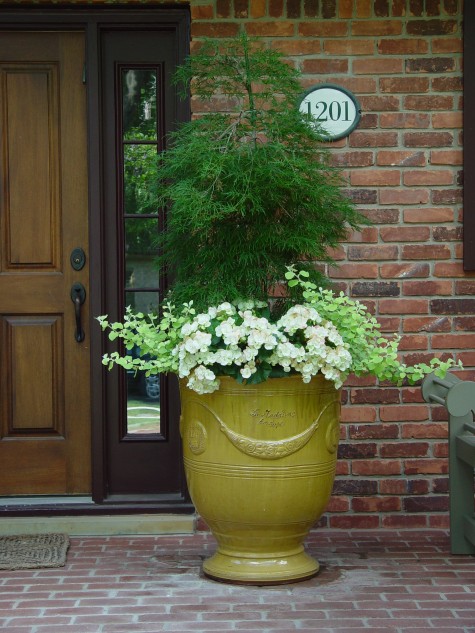 Covered porches can be dark, lacking a natural light source. This yellow glazed French pot lights up this darker area; the Japanese maple is a light, lacy, and charmingly lanky choice for a pot. Licorice is surprisingly tolerant of low light; its pale green color looks fresh against the dark brick. Hello, number 1201.
Covered porches can be dark, lacking a natural light source. This yellow glazed French pot lights up this darker area; the Japanese maple is a light, lacy, and charmingly lanky choice for a pot. Licorice is surprisingly tolerant of low light; its pale green color looks fresh against the dark brick. Hello, number 1201.
 Though this modern house has a wide staircase to the front door, the steps are shallow. This makes any placement of containers on the steps difficult. Which step, or how many would get containers? Multiple containers would seem out of keeping with the clean lines of the architecture. The columnar red foliaged maples “Princeton Sentry” are amazingly handsome here. Containers set in a landscaped bed-this can be a great idea. Large limestone pots placed into the groundcover in front of those maples adds so much interest to the entry. The reproduction Frank Lloyd pots set on pillars I always plant simply, and with lots of color-I have an instinct to warm those pots up with plants that would never make the top ten list of modernist approved species.
Though this modern house has a wide staircase to the front door, the steps are shallow. This makes any placement of containers on the steps difficult. Which step, or how many would get containers? Multiple containers would seem out of keeping with the clean lines of the architecture. The columnar red foliaged maples “Princeton Sentry” are amazingly handsome here. Containers set in a landscaped bed-this can be a great idea. Large limestone pots placed into the groundcover in front of those maples adds so much interest to the entry. The reproduction Frank Lloyd pots set on pillars I always plant simply, and with lots of color-I have an instinct to warm those pots up with plants that would never make the top ten list of modernist approved species.
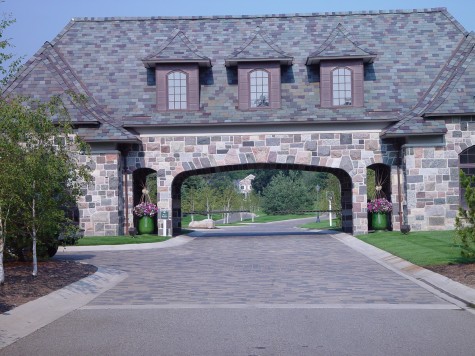 The entrance to this gated community serves much the same purpose as a front door. You have to stop your car, and knock. Nonetheless, the pots at the gateway say welcome in a very cheery way. These green glazed French olive jars contribute as much to the visual impression as the plants.
The entrance to this gated community serves much the same purpose as a front door. You have to stop your car, and knock. Nonetheless, the pots at the gateway say welcome in a very cheery way. These green glazed French olive jars contribute as much to the visual impression as the plants.
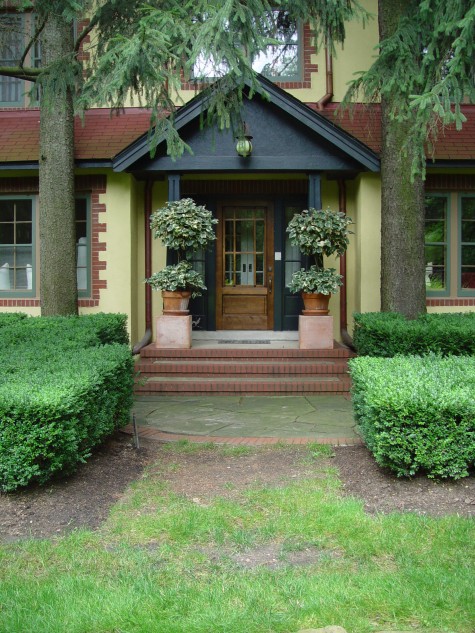 Simple terra cotta pots-it is amazing how these plain claypots are so iconic and symbolic of a garden-I am comfortable putting them just about anywhere. How one dresses and arranges them makes all the difference. These lovely variegated hedera topiaries are strong and gorgeous on this front porch. The plain pots may be simple, but they are placed at a good height. Terra cotta squares turned up side down make great pedestals. Terra cotta pots-I insist on the saucers. They are an essential part of the look . I like gestures that look finished.
Simple terra cotta pots-it is amazing how these plain claypots are so iconic and symbolic of a garden-I am comfortable putting them just about anywhere. How one dresses and arranges them makes all the difference. These lovely variegated hedera topiaries are strong and gorgeous on this front porch. The plain pots may be simple, but they are placed at a good height. Terra cotta squares turned up side down make great pedestals. Terra cotta pots-I insist on the saucers. They are an essential part of the look . I like gestures that look finished.
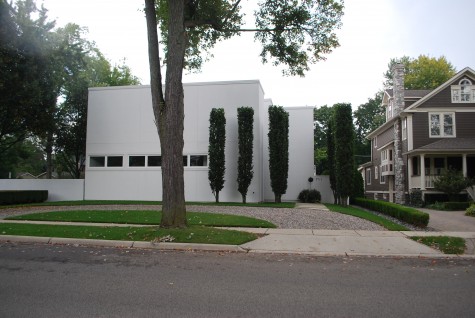
Very contemporary homes house people . I try never to forget this. The front door of this home is not apparent from the street. The single pot-which last year I planted with a boxwood on standard, inky fingers coleus, and lime licorice, signals where to turn left, towards the front door. The small scale of the topiary head to the wide dimension of the pot-this low and generous mass with a dot hovering overhead- I like. Containers at the front door is a broad topic. I so like that every front door needs a different treatment. We may all be gardeners, but we garden individually.
